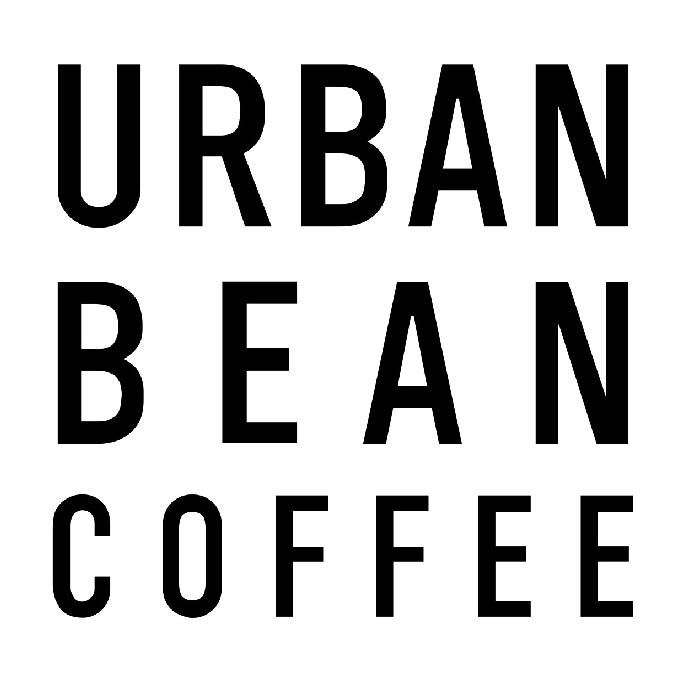Good water quality is essential for brewing great coffee.
Bad water can seriously ruin the taste of coffee. Water with too few salts and minerals will result in an unsaturated drink, and water with too many salts and minerals much will flatten the taste and not reveal all the characteristics of the coffee beans.
We reviewed the water standards for coffee brewing and are sharing ready-made solutions for achieving them at home.
We'll also share the optimal ratios of coffee and water for popular brewing methods.
Let's begin!
What Water to Use for Making Coffee
The first sign of good water for coffee is the absence of color and smell, but there are other indicators that can be determined only by laboratory methods.
The Specialty Coffee Association (SCA) has water recommendations:
- No odor, color, or chlorine
- Calcium hardness between 50 and 175 parts per million (ppm)
- Total alkalinity of 40 ppm
- pH of 7.0
Let's consider these factors in more detail.
Water hardness
Water hardness is essential for coffee brewing.
When using hard water, limescale forms on the walls of a coffee maker's boilers, which impairs thermal performance and significantly reduces the service life of the coffee maker.
Hard water is not suitable for the extraction process. Water saturated with solutes—calcium and magnesium—has little potential to dissolve coffee oils.
Solutes react with coffee oils to form slightly soluble salts that create films and deposits, ultimately reducing the quality of the coffee.
Simply put, coffee brewed with hard water extracts poorly, leading to a poor taste.
The SCA recommends a water hardness (based on calcium) of 50 to 175 ppm.
Water mineralization
Tap water is different around the world. It rarely falls within the optimal total dissolved solids (TDS) range of 75 to 250 mg/L TDS. The TDS target is 150 mg/L.
TDS itself does not say anything about the composition of water—it only shows the total amount of dissolved salts in the water. But according to this indicator, you can get information about the taste of brewed coffee.
A lower TDS indicates softer water. Too low a value will lead to unstable extraction and coffee with a not-very-intense body. Water with too high a TDS value will cause your coffee to be flat, without all its normal flavors.
Chlorine
The water with which you brew coffee should have no chlorine.
If you are lucky and have relatively clean water flowing from your tap—clear, fresh, and odorless—don't forget that chlorine is used to disinfect tap water.
Chlorine is a bitter substance and this bitterness will definitely show up in your drink. In addition, prolonged use of chlorinated water can harm the body.
A simple carbon filter will remove chlorine and greatly improve your water quality.
Alkalinity
Alkaline compounds lower the acidity of water. The lower the alkalinity, the more pronounced the acidic tones will appear. Total alkalinity should be 40 mg/L. If the value is higher, your coffee will taste flat.
pH level
This indicator shows the balance between acidity and alkalinity. The optimum pH for the best water for coffee is 7.0. Any value between 6.5 and 8.0 is also good.
If the pH is lower, the acidity of the water is higher. Acidity negatively affects the drink—your coffee will taste sour. If the pH is too high, your coffee will be bitter.
What Are the Ready-Made Solutions?
All the parameters described above are important for making delicious coffee, but identifying all of them at home can seem like a daunting task. We've prepared some solutions:
- Find out what your tap water is like. The easiest way to do this is to buy an aquarium water-testing kit. You can also send water to a lab for testing.
- Buy bottled water. Manufacturers indicate the composition on the label. Pay attention only to mineralization.
- Use a reverse osmosis system with a mineralizer. Reverse osmosis water is clean, tasty, and neutral for the body but devoid of some minerals. The mineralizer restores those minerals.
Water Temperature
The water temperature for brewing coffee must be between 208° and 185°F (98° and 85°C). Water that's too hot makes coffee bitter. Water that's too cool makes coffee unsaturated.
Never use freshly boiled water from your kettle, as temperatures as high as 212°F (100°C) can lead to over-extraction and cause the drink to lose a significant portion of its flavor and become bitter. If you use a regular kettle, let the water cool for about 20-30 seconds after boiling.
Here are the water temperatures you should use for each type of roast:
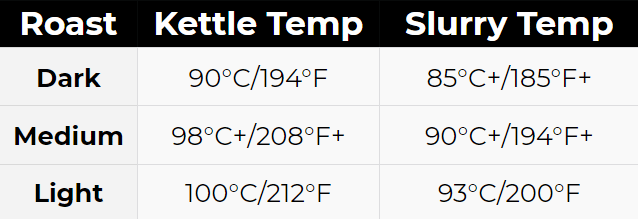
You can find more information about water temperature for brewing in this video:
Coffee-to-Water Ratios
This ratio defines the taste, strength, and aroma of coffee. The ratio will be different for everyone based on their preferences, but to find your perfect cup of coffee, you can refer to the recommendations.
The base coffee-to-water ratio is 1:10. It's easy to remember. The SCA has its own take on this proportion. They advise a 1:17 ratio.
We have compiled the standard ratios for the most popular brewing methods.
Drip and Pour-Over: Drip, Hario V60, Chemex, Kalita
Electric drip coffee makers, which are very popular in American homes, use a pour-over method when brewing coffee.
The essence of the brewing method is that water passes through a filter that holds ground coffee. The finished drink then flows down into a cup or decanter.
For a strong coffee, start at 1:14; for a regular cup, start at 1:17.


Espresso
Choosing the ideal proportion of coffee and water when preparing espresso can be difficult. Different models of espresso machine have their own characteristics.
In the table below, we have prepared recommendations for the best ratio.
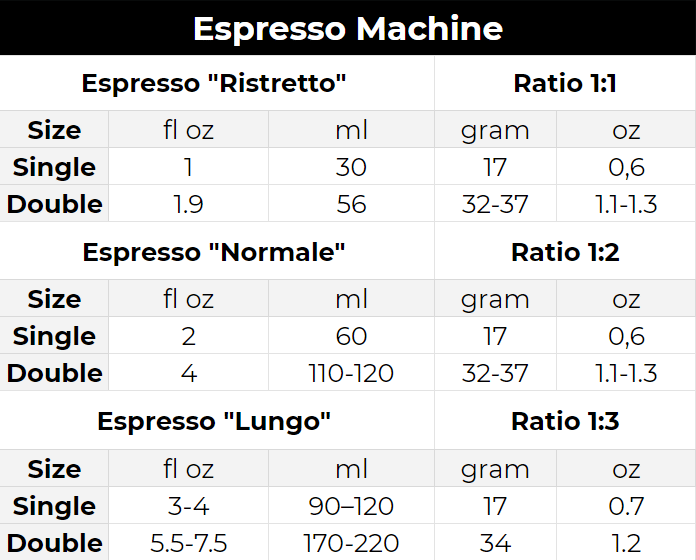
Immersion Methods: French Press, AeroPress, Siphon
When brewing a drink in any of immersion coffee makers, the ground beans are in constant contact with water. This can cause the extraction to be too strong.
Try 1:15 for a standard cup or 1:11 for a stronger drink.



Moka Pot
This coffee maker is often used in European countries. In Italy, a Moka pot can be found in almost every home.
Be careful when brewing coffee. The coffee maker can easily overheat and burn your drink.

Percolator
These coffee makers are no longer mass produced, but some adherents to the retro style still brew coffee in them.
A percolator is often compared to a Moka pot. In a Moka pot, the water flows through the coffee grounds once, but in a percolator the water flows through the grounds many times, leading to a bitter, oversaturated drink.
Start with a ratio of 1:17 for a regular cup of coffee, or 1:13 if you prefer a very strong drink.

Cold Brew
Cold brew is an immersion coffee brewing method that uses cold water instead of hot water.
With this brewing method, it is difficult to quickly change the proportions of beans and water in order to improve the taste of the finished beverage. The entire brewing process takes 8 to 24 hours.
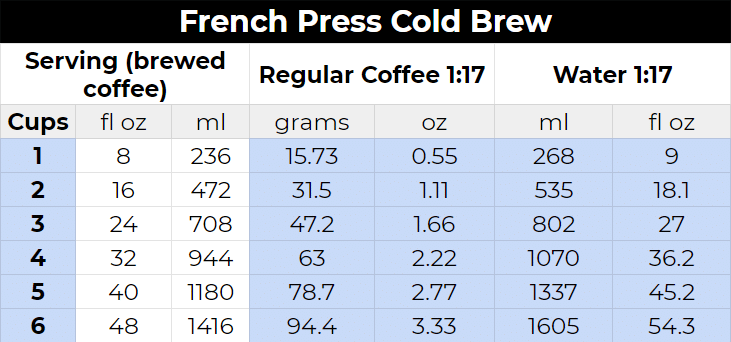
Turkish Coffee
Turkish coffee is prepared in a cezve using the full immersion method but no filter. The drink is very strong. Start with a 1:10 ratio.
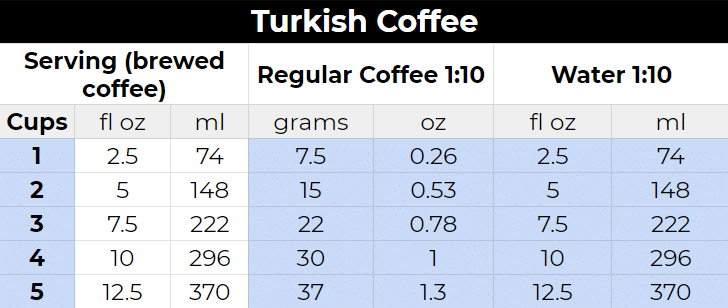
Conclusion
There is no perfect coffee brewing method. For each variety and each coffee lover, something different is suitable.
Now you not only can choose the best water for your coffee, but you also know what ratios of coffee grounds and water you should use to get the best coffee with any brewing method.
